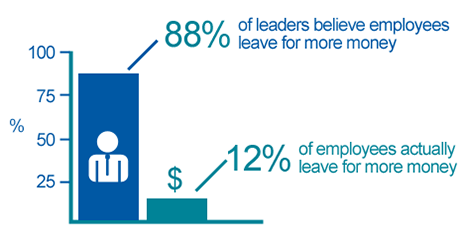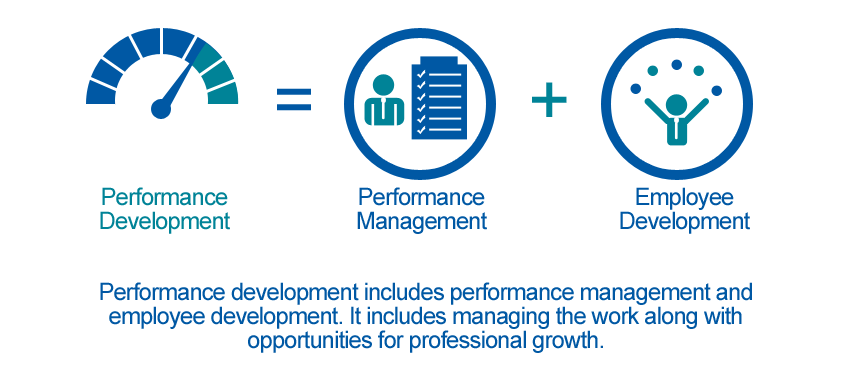Why They’ll Stay
You’ve invested significant time, cost, and energy into hiring youth, and so you’ll want to make sure they stay. By engaging your younger employees, they’ll have a strong level of commitment to your organization. They’ll speak well about your business, their colleagues, and your customers. They will want to be a part of the organization and will work towards your organization’s success.
The unfortunate news is that only 1 in 4 employees in Canada are engaged with their work. Disengaged employees don’t usually leave the organization; instead they create poor work relationships, lower your productivity, and don’t do more than is required. So it pays to spend time thinking about and creating a plan for youth engagement in your organization.
How You Can Influence Employee Engagement
A report by the Conference Board of Canada outlines the top seven factors that influence employee engagement. They are:
- Confidence in senior leadership
- Relationship with manager
- Interesting and challenging work
- Professional and personal growth
- Acknowledgement and recognition
- Relationships with co-workers
- Autonomy

You need to be aware that there are many factors that can affect employee engagement, and it can be different between different employee segments.

Angela Daurie
AGADA Biosciences
"I think training programs within your company are really important to hiring youth. We're willing to learn. We want to learn. We're looking for new experiences. If you have a training program, that's a great incentive for people."

David Regan
DHX Media
"To create an inviting workplace for youth, provide true and challenging work that's consistent with the career goals and the educational programs that the youth have had."

Alexia McGill
Agenda Managers
"We do team meetings probably three times a week. In the beginning, I typically meet with the student daily. Those might be quick, 15-minute check-in meetings, and we do it for however long they need, to feel that they've got the ground under them and they have the support that they need to do their job properly."

Xiaoqing Zhuang
AGADA Biosciences
"For the new workers, give them some challenges and let them join in solving problems and join in the work."
Break through Communication Barriers
When working with younger employees, something as simple as how you communicate with them can make all the difference.
- Use simpler language, avoiding technical language or jargon they might not be familiar with. Explain terms and acronyms as needed.
- Show respect for their views and opinions. Don’t interrupt them or dismiss what they say. Make sure they know their input is valued.
- Be open-minded and listen to their feedback. Everyone appreciates being heard.
- Let them speak when they are ready to, don’t force participation.
- Be mindful of your own tone, and don’t patronize them.
Make Connections
Don’t underestimate the importance of helping your younger workers build their network. Building this sense of connection will make a positive impact on the experience you create for your employee.
- Introduce them to people and resources that would be beneficial to their work and development.
- Adopt various multimedia platforms like Google Hangouts, LiveJournal, Ask.fm, and such which let younger workers network outside of traditional means. This will help them expand their access to networks and resources related to their work.
- Create or have them attend social events that allow for networking opportunities.
Satisfaction Matters at Work
Younger employees want many of the same things that the rest of your employees want:
- To understand the vision and how they fit in
- Interesting and challenging work
- To have their work matter, and to help achieve something important
- Autonomy in their work with support as needed
- Trusting and supportive relationships with their superiors and colleagues
Support Performance Development

When you understand the value of performance development, you improve your company’s ability to adapt to changing markets and business demands. Performance development lets employees build on their skills and grow as professionals, and that goes a long way in how engaged they feel.
Use a professional development plan to document the expectations for professional growth. The plan should:
- Be created with your employee
- Include the employee’s strengths
- Outline areas for development that relate to their professional goals
- Focus on outcomes that are supported with goals
Goal-setting helps increase motivation. It gives employees something to aim for and accomplish. Goals should be specific, time-bound, measurable, and attainable.
Goals to consider include:

Be an Effective Coach
This is not the same as managing. Coaching is working to help an employee grow, develop, and achieve, whereas management deals with supervising, evaluating, and meeting objectives.
When youth are coached, they:
- Gain valuable skills that help them advance in their careers
- Feel supported and encouraged by their manager and the company
- Experience the pride and satisfaction that comes with achievement
Effective coaches:
- Encourage employees to create their own solutions, instead of just telling them what to do
- Ask open-ended questions, and encourage dialogue
- Focus on the problem or behaviour that needs improvement, not the person
- Provide objective feedback, and take time to make sure that feedback is understood
The word mentor is often interchanged with coach, however there are distinct differences between the two. Mentors:
- Are found, rather than assigned
- Have a longer-term relationship
- Don’t have a management relationship with the employee
- Are a neutral advisor and confidant
- Provide career advice, instead of getting involved in day-to-day tasks
Offer Recognition and Feedback
Do it often. Be specific. Be sincere.
Recognition lets youth know that what they do matters and they can make a difference.
- It mentally reinforces that what they did was important.
- It creates an emotional connection.
- It sets the standards for excellence.
Provide regular performance feedback to your employees through formal and informal means. It helps to keep your employees engaged. It affirms work well done and lets them make improvements if needed. It also helps the discussion during performance reviews and eliminates any surprises.
Tips for offering feedback to younger workers:
- Give it regularly. Check in with them to ask questions and touch base.
- Ask for their opinion, especially during debates.
- Be an active listener, and repeat or rephrase what you hear them saying.
- Be aware of your body language. Keep it positive and friendly.
- Avoid being overly authoritarian. Focus on positive reinforcement.
- Skip the sarcasm to avoid misunderstandings.
- Check for understanding. Young workers may say they understand when they don’t.
- Publicly acknowledge what the employee did well.
- Thank them for their good work.
- Make sure praise is sincere.